For local growers who are looking for the best fruit trees to grow in Texas, there are a few that especially thrive in its climate. Trying to plant any other fruit free in Texas would prove disastrous if it cannot acclimatize to harsh Texas temperatures.
To help you find the best fruit trees to grow in Texas, here are 10 options with all their growing requirements.
1) Apples
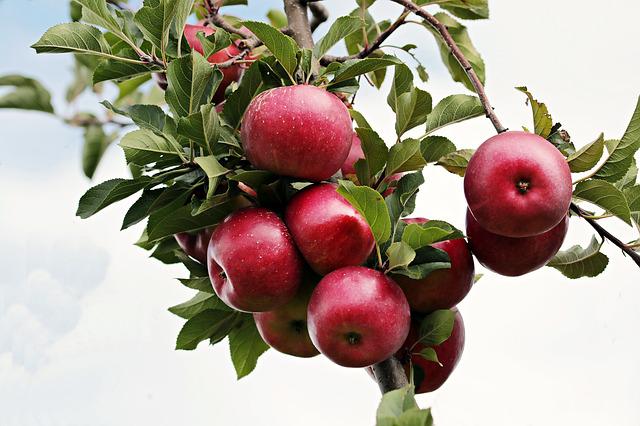
Apple is one of the most common fruit trees to grow in Texas.
Areas Grown: You can grow apples throughout Texas, but they do particularly well in the central and northern parts of the state. Apple trees grown in the warmer parts of Texas will need some protection from the sun.
Cultivars Grown: Popular apple trees grown are Granny Smith, Golden Delicious, Gala, Fuji, and Honeycrisp to name a few.
Soil: Ideal soil for apple trees should be well-draining, with a slightly acidic pH of 5.8 to 7.0.
Watering: Generally apple trees rely on rainwater, but droughts are becoming more frequent. Water your apple trees every now and then. Apple trees need an inch of water per week, for established trees.
Light Level: Apple trees need 6 to 8 hours of light every day.
Frost Tolerant: Slightly tolerant but they still need protection.
Temperature: During the active growth period, the temperature for growing apples should be around 70-75℉ (21-24℃). Apples do best with a rest period in winter, and plenty of sunshine in the summer.
Pests and Diseases: There are diseases such as Fire Blight and Cotton Root Rot that affect apple trees. Orchard owners must be vigilant for any signs of diseases or pests. Address these issues as soon as possible! Apple trees do not like to be in wet soil, as this may lead to damage to the roots or root rot.
Blossom Time: The blossom period depends greatly on the cultivar, this usually happens anywhere between early Spring to late Summer. Some apple varieties like McIntosh, Gala, Fuji, and Honeycrisp would be the first to blossom. Mutsu and Pink Lady would blossom later on in the Summer.
Harvesting: Harvesting of apples begins in July and can continue until November. Texas, being fortunate enough to have different climatic conditions, can grow various cultivars in various regions.
Growing herbs as well? Find out how to harvest mint without killing the plant.
2) Peaches

Areas Grown: Peaches are the largest deciduous fruit crop Texas produces, with approximately 1 million grown in the state. Peach production comes from three main areas, the east, central, and central northwest. Peaches do well in the heat or cold, but pests and diseases pose a threat.
Cultivars Grown: Some of the best varieties are Harvester, Loring, Redskin, and Dixie Red.
Soil: Soil has to be well-draining. USDA zones for growing Peaches are 4 to 9 but they can do well in zones 6 to 8, depending on the cultivar. Your soil pH can be neutral to slightly acidic.
Watering: 1 inch or more a week.
Light Level: Peaches need 6 to 8 hours of light a day.
Frost Tolerant: Does not do well with frost, although there are frost tolerant cultivars available.
Temperature: Peaches need moderate temperatures however there are other varieties that can be grown in colder or warmer temperatures.
Pests and Diseases: The Peach tree is not short of pests and diseases, the pests include the Greater and Lesser Peach Tree Borer, San Jose Scale, Catfacing Insects, and the Oriental Moth. Other serious diseases are Scab, Brown Rot, Bacterial Spot, and Cotton Root Rot.
Bloom Time: Depending on your variety, it can take between 2 and 4 years for your tree to bloom. The blooms appear in the early Spring. Some peach varieties are self-pollinating and need bees and other insects to pollinate and induce fruit production.
Harvesting: Peaches are harvested from June to August, as the fruit turns from green to yellow when it is ready for picking. Fruit must be harvested from the top and outer branches first as these will ripen first.
3) Pears
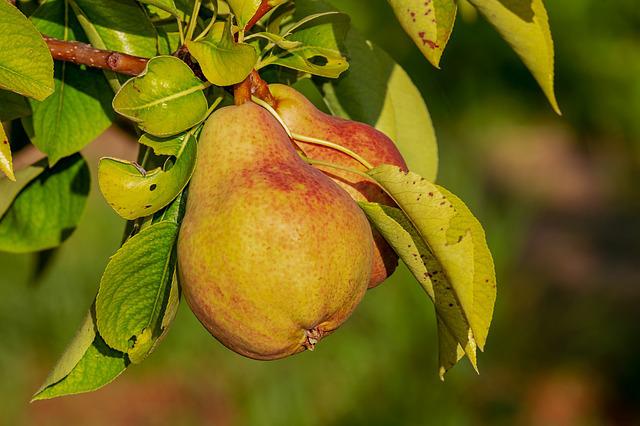
Areas Grown: Pears are a very popular fruit, and are grown all over Texas. Note, they do better in the northern parts of the state, as they need a bit of a rest period before Spring.
Cultivars Grown: The most common pear varieties grown in Texas are European or French Pears, Oriental Hybrids, or Asian Pears.
Soil: Pears need well-draining soil for optimal growth, they can be grown in USDA zones 3 to 10.
Watering: 1 inch of water per week, a bit more may be necessary depending on the weather.
Light Level: 6 to 8 hours of full sun daily.
Frost Tolerant: Not frost tolerant at all.
Temperature: Pear trees do well with a cold winter and a cool summer. More popular pear varieties need temperatures below 45℉ (7℃) for optimal pear output.
Diseases: Most of the pear trees grown in Texas are of the Oriental variety because of their hardiness against Fire Blight. The fungus Fabraea causes the appearance of dark spots on leaves and fruit. Pear Scab and Sooty Blotch appear in humid weather. Regular pests include Aphids, Ants, and Spider Mites.
Bloom Time: Pears start blooming from February end to mid-April, they are among the first fruit trees to begin blooming. The pear tree must have a cold period or a dormancy period to encourage blooming.
Harvesting: The majority of pear cultivars are harvested in August and September, the Pears should be picked and then ripened, as the fruit ripened on the tree have a poor taste and texture.
4) Persimmons
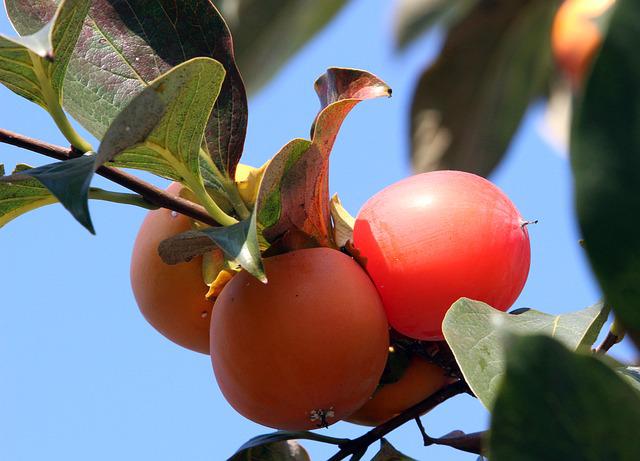
Area Grown: Persimmons are easy trees to grow, they are not overly fussy and therefore thrive in the dry heat of Texas. Persimmons are an unusual fruit, they look like a tomato but taste like a mango with an odd texture. Hardy and drought resistant, there are two indigenous persimmon trees in Texas.
Cultivars Grown: There is the Fuyu, which is a non-astringent, medium-sized, self fruiting persimmon. The Eureka is the best commercial variety in the state. The Hachiya is another popular variety with bright orange skin and vigorous growth.
Soil: Soils must be loamy, fertile, and well-draining with a pH of 6-6.5.
Watering: They do not need a lot of water, in fact, 36 to 48 inches of rain a year will suffice. Anything lower will compromise fruit size and yield.
Light Level: 6 to 8 hours of sunlight daily but are very tolerant to shade.
Frost Tolerant: They tolerate a minimum of 5℉ (-15℃).
Temperature: Persimmon handles temperatures between 5 and 40℉ (-15 to 4℃). Persimmons can be grown in USDA zones 4 through 9.
Pests and Disease: Diseases affecting Persimmon trees are Crown Gall, and Anthracnose, which is a blight that affects all parts of the tree.
Bloom Time: Grafted persimmon trees bloom for the first time in 2 or 3 years, non-grafted Oriental persimmon trees take 5 years to bloom, and non-grafted American Persimmon trees can take even longer!
Harvesting: Harvesting of persimmon fruit begins in September going on to November. The color of the fruit will vary from a light yellow to an orange-red. There is an astringent type and a non-astringent type, one can be eaten firm and the other should be soft.
How to Grow and Care For Agapanthus And Where to Plant Them?
5) Figs

Area Grown: Figs are hardy trees and do well in any part of this hot state, but they do exceptionally well in South Central Texas.
Cultivars Grown: Recommended cultivars to grow in Texas are Alma, Brown Turkey, Chicago Hardy Fig, Celeste, and the Texas Everbearing. There are many others.
Soil: Figs can grow in a wide range of soil types from sandy soils to clay. But, good drainage is more important than fertile soils, water sitting by the roots is harmful. Optimal pH widely ranges from 6.0 to 6.5 although 5.5 to 8.0 is also acceptable depending on the cultivar.
Watering: Generally 1 to 1.5 inches of water per week.
Light Level: They do best with 8 hours of light daily, but a minimum of 6 hours will do too.
Frost Tolerant: Fig trees are not tolerant of frost, thus they do better in South Texas.
Temperature: Figs need warm climates where the temperatures do not go below 51 degrees Fahrenheit. The USDA zones to plant figs are 5 to 11. The low-temperature zone is for the tolerant modified cultivars.
Pests and Disease: Fig trees are prone to Crown Gall, Cotton Root Rot, and in the north, the trees are affected by Dieback caused by colds. Fig Mosaic is a virus that causes deformity in the leaves, and there are many more diseases.
Bloom Time: Fig trees bloom in early Spring.
Harvesting: Figs should be harvested when fully ripe, the riper they are the sweeter. The ripe color of the fruit depends on the variety, some can be green or yellow, or even purple!
6) Plums
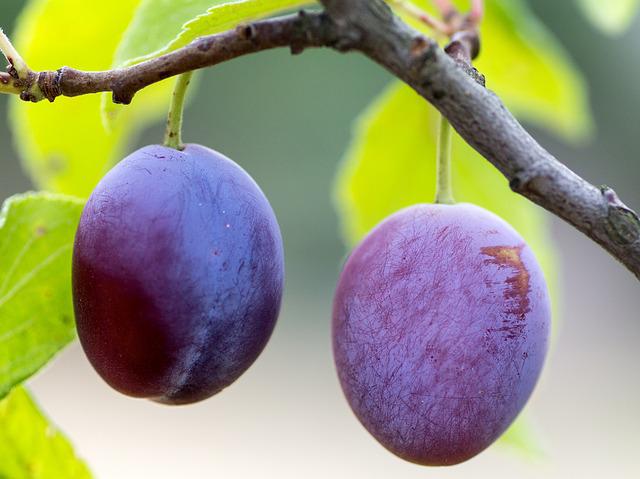
Area Grown: Plums are grown throughout Texas in areas that have a maximum USDA zone 7.
Cultivars Grown: There are Japanese cultivars as well as European cultivars. Some of these varieties are Methley, Santa Rosa, Bruce, and Morris.
Soil: Plums like sandy loams or other loamy soils and a soil pH of 6.5 to 7.0. Soil should be well-draining.
Watering: 1 to 1.5 inches of water a week.
Light Level: They need 6 to 8 hours of bright light a day.
Frost tolerant: The Plum tree is hardy and can tolerate frost.
Temperature: Plum trees need a cold winter to produce good Plums, the Japanese and European varieties have different cold needs. The best areas to grow Plums are in zones 1 to 7.
Pests and Disease: Pests such as Weevils, Scale, Mites, and Borers will sometimes affect plum trees, as well as diseases like Leaf Scald, Bacterial Spot, and Oak Root Rot. Some of the pests and diseases can be controlled through spraying with insecticide.
Bloom Time: All varieties of plums blossom in late Winter going on to early Spring.
Harvesting: The plum crop usually ripens from May to September and the fruit should only be picked when ripe.
7) Pomegranates
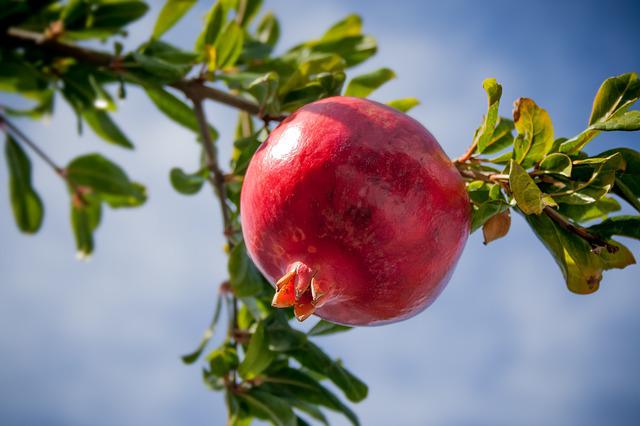
Area Grown: Pomegranates do well in some of the warmest areas in Texas. They do well in the South, Southeast, and Central part of the state
Cultivars Grown: The most common varieties are Nana, Sweet and Wonderful, Santa Rose, Bruce, and Morris. Some of these are cold tolerant.
Soil: Pomegranates do well in both slightly acidic soils as well as alkaline, here again, though soils must be well-draining.
Watering: 1 inch of water a week, but, they are drought tolerant.
Light Level: For your pomegranate to do well it must receive up to 8 hours of sun a day.
Frost Tolerant: Most pomegranate cultivars are cold-tolerant, but will not survive cold below 10℉ (-12℃).
Temperature: Pomegranates enjoy cool winters and warm dry summers, they are more cold-tolerant than other fruit trees grown in Texas. USDA recommended zones are from 7 to 10.
Pests and Diseases: Some of the more common pests that attack them are Thrips, Pomegranate Butterfly, Scale, Mealybugs, and Whiteflies. Some diseases are Leaf Spot, Dry Rot, and Soft Rot.
Bloom Time: The blooming period for pomegranates is quite lengthy, spanning from April to June. It takes the fruit 6 to 7 months to ripen. Late-flowering cultivars might not have enough time to ripen.
Harvesting: It can take up to 3 years before a pomegranate tree can give you a good harvest. In Texas, the harvesting period is from October to December.
8) Cherries
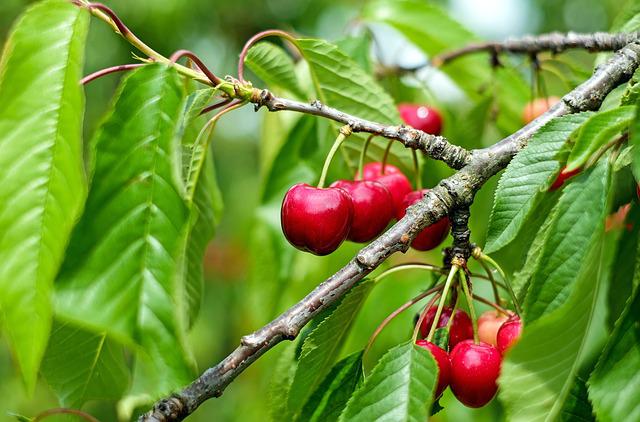
Area Grown: Cherries prefer the cooler areas of Texas, like the Northernmost counties of the state. There are a few native varieties of Cherry trees that do well in Texas.
Cultivars Grown: Some of the Cherry Tree varieties to grow in Texas are Black Cherry, Lapins Cherry Tree, Dwarf North Star, Minnie Royal Cherry Tree, Royal Lee, and Stella Cherry Tree.
Soil: Cherries do well in well-draining soils, with a soil pH of 6.0 to 6.8.
Watering: Mature Cherry Trees need 1 inch of water every ten days. If there is a drought it is important to supply more water to the trees.
Light Level: Cherry trees need 6 hours of full sun, with good air circulation.
Frost Tolerant: There are some cultivars that are cold tolerant.
Temperature: Cherry Trees like other deciduous trees need a certain number of low-chill days below 45℉ (7℃) to fruit well, this is 200 days. Sweet cherries can be grown in USDA zones 5 to 7, the cold-tolerant cherry Trees can be grown in zones 3 and 4,
Pests and Diseases: Here are the most common cherry tree pests and diseases: Black Knot, Brown Rot, Cherry leaf Spot, Cytospora Canker, Powdery Mildew, Necrotic Ringspot, and Silver Leaf.
Bloom Time: Texas Cherry Trees bloom in February when it is Spring.
Harvesting: It takes anywhere between 3 to 7 years for a cherry tree to start bearing fruit, varying with the cultivar. Cherry harvesting begins in mid-April to July.
9) Loquat
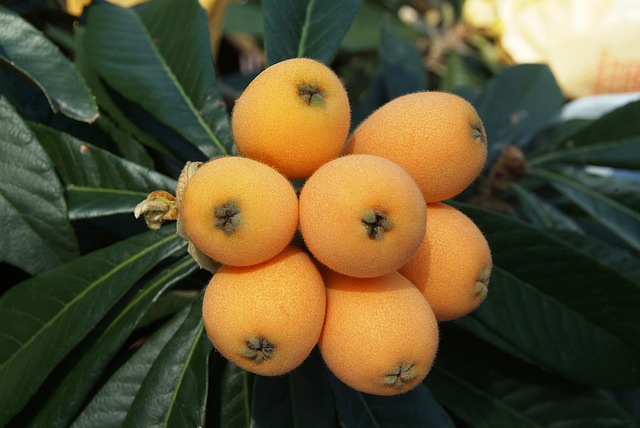
Not many people have tried to grow the Loquat but it is a well-known tropical fruit in Texas. This evergreen tree originates from China and Japan and is valued as an ornamental tree.
Area Grown: Loquats are best suited to mild and subtropical climates.
Cultivars Grown: Some loquat trees are self-pollinating and others must have another tree close by, some of the cultivars are: Gold Nugget, Champagne, Judith, Oliver, and Golich.
Soil: Loquats can grow in partial clay soils, or even sandy soils, so long as they are well-draining soils.
Watering: Over or underwatering will affect the health of your fruit tree. Their requirement is 25 to 40 inches of water per year.
Light Level: 6 to 8 hours of full sun a day.
Frost Tolerant: Not frost tolerant.
Temperature: The best temperatures to grow loquats are 45 to 85℉ (7-29℃). Lower than this the fruit and flowers die off. Grow them in USDA zones 8-10.
Pests and Diseases: The Loquat does not have many pests and diseases. One is the Fire Blight, which affects other fruit trees as well. Tipburn of the leaves occurs during hot and dry summers. One other pest is the Mexican Fruit Fly.
Bloom Time: Loquats flower in the Fall or Winter in Texas, this is from September to January, the flowers are fragrant and can be white to off white.
Harvesting: Loquats will begin to bear fruits in 2 or 3 years, the loquat produces fruit in the Spring, from April to June.
10) Jujube
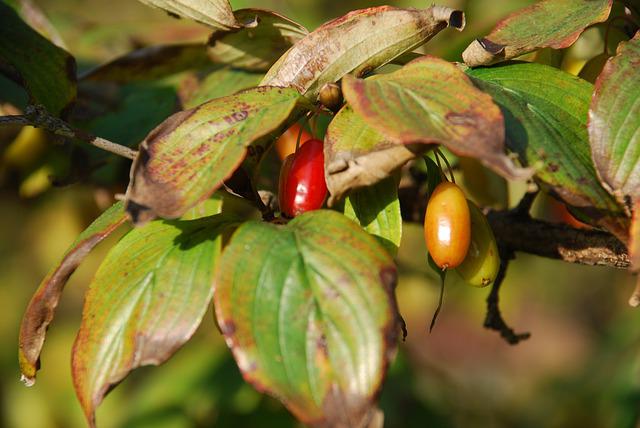
The Jujube also known as Chinese Date was introduced to Texas in 1875, it is a hardy tree and once established needs little care and can live for a very long time. China has over 700 varieties of the Jujube.
Area Grown: Jujube grows all over Texas, from the coast to the center of the state.
Cultivars Grown: There are many varieties of Jujube, but the better ones are, Sugar Cane, Li, Sherwood, Shanxi Li, and Honey Jar (the juiciest).
Soil: Jujube Trees thrive in a wide range of soils, although some good drainage is necessary. The jujube tree can be grown in USDA zones 6 to 11. Soil pH should be pH 5.5 to 6.5, mildly acidic.
Watering: Jujube trees are drought resistant and can even survive on as little as 8 inches of water a year!
Light Level: They need 6 to 8 hours of sunlight every day.
Frost Tolerant: Jujube trees can survive very low temperatures, as low as -28℉ (-33℃)
Temperature: Jujube trees do best in warm dry climates, this comprises of USDA zones 5 to 10. Temperatures of -5 to 40℉ (-20 to 4℃).
Diseases: Jujube trees are affected by various fungi, bacteria, and pests such as Rust, White Rot, Anthracnose, Fruit Rots, Dieback, and Ascochyta Spot.
Bloom Time: They flower in late June to early July.
Harvesting: Once they transform from a green to a brownish red you can harvest the fruit, which is from July and August.
Conclusion
As you can see Texas has an impressive array of fruit trees that grow well in the conditions the state offers. Most of these fruit trees either prefer hot temperatures or a gradual descent from hot to cold.
The best fruit trees to grow in Texas are:
- Apples
- Peaches
- Pears
- Persimmons
- Figs
- Plums
- Pomegranates
- Cherries
- Loquats
- Jujube
FAQs
Although they are not a tree but a bush, blackberries are perhaps the easiest fruit to grow in Texas. Followed by a few more shrub-like berry fruits.
Other than fruit, you can also grow nuts such as Pecans, Almonds, and Walnuts. Also, you can grow berries in Texas, these include Blueberry, Elderberry, Goji berry, and Raspberry.
